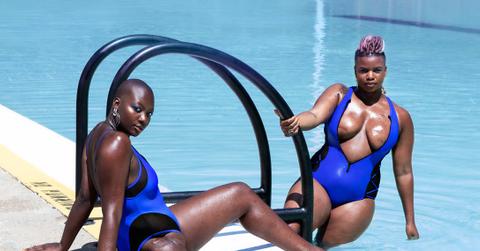
Chromat
Fashion Without Limits For People With Disabilities
By Ash CJun. 12 2019, Published 10:44 p.m. ET
Roughly 85.3 million people in the US lives with disabilities, which represents at least 30 percent of the population. Despite the fact that we’re in the “age of inclusivity”, the fashion industry has widely ignored this demographic, and only a handful of brands have recognised the spending power of this consumer group.
One of those few brands is Tommy Hilfiger, a sole representative from the luxury fashion world. Back in 2016, the brand launched its Tommy Adaptive line for kids, and expanded to adults one year later. The inclusive line promotes itself as “designed for all, with innovative features to ensure getting dressed is better than ever”; and incorporates magnetic buttons, adjustable leg openings, and easy-to-use closures into premium apparel. Most importantly, the Adaptive fashion is aesthetically quite similar to the brand’s core collection, and the pricing holds flat.
Cax, the model and amputee who empowered many while walking Chromat‘s runway with her prosthetic leg at New York Fashion Week’s Spring/Summer 2019 show, said that:
-“It’s much better than it was 10 years ago, there’s no denying that. But there’s much work to be done. A lot of brands are stuck at visibility and tokenism as opposed to true representation.”
“It’s much better than it was 10 years ago, there’s no denying that. But there’s much work to be done. A lot of brands are stuck at visibility and tokenism as opposed to true representation.”
Tommy Hilfiger is not entirely alone in filling the void in the industry. Nike spent three intensive years to develop FlyEase, an innovative footwear range that can be taken off or put on in just one fluid motion without any help from others.
-“Why not make it accessible to begin with? It’s thinking about everybody and a lot of brands don’t think about others. […] Bigger brands have a responsibility to lead the way and if they don’t no one will follow suit. People are still scared of desiring people with disabilities but the more brands include us, the more it will alter peoples’ perception of disability and that will then change the flow in people’s daily lives.”
“Why not make it accessible to begin with? It’s thinking about everybody and a lot of brands don’t think about others. […] Bigger brands have a responsibility to lead the way and if they don’t no one will follow suit. People are still scared of desiring people with disabilities but the more brands include us, the more it will alter peoples’ perception of disability and that will then change the flow in people’s daily lives.”
— When speaking to Hypebeast, fashion consultant and content creator Jourdie Godley posed the ultimate question. Godley was born with cerebral palsy and primarily uses a wheelchair. His sentiment is shared among many other underrepresented communities — there is too much misportrayal, and not enough representation in the industry. The brands are not understanding of the fact that people with disabilities really just wanted to dress well, same as everyone else.
Open Style Lab is a nonprofit founded at MIT in 2014 that understands the importance of reflecting this particular community’s needs. They often hold classes in collaboration with Parsons School of Design, and they are proudly “dedicated to making style accessible to people of all abilities.” Open Style Lab hosted an exhibition back in February named “Universal Materiality”, that showcased experimental garments that were designed specifically for elderly rehab patients. They also made sure that the installation details were universal and gender-fluid, including the mannequins.
In the video above, Quemuel Arroyo, an ambassador for OSL, as well as the Chief Accessibility Specialist and ADA Coordinator at the NYC Department of Transportation, enlightened viewers that:
-“The larger conversation is intersectionality and the hardship that people with disabilities have to incur just to experience everyday things, from coffee shops to where I get my lunch to where I drink at night. We have to incur more expenses than the average person because our needs are so hard to come by.”
“The larger conversation is intersectionality and the hardship that people with disabilities have to incur just to experience everyday things, from coffee shops to where I get my lunch to where I drink at night. We have to incur more expenses than the average person because our needs are so hard to come by.”

